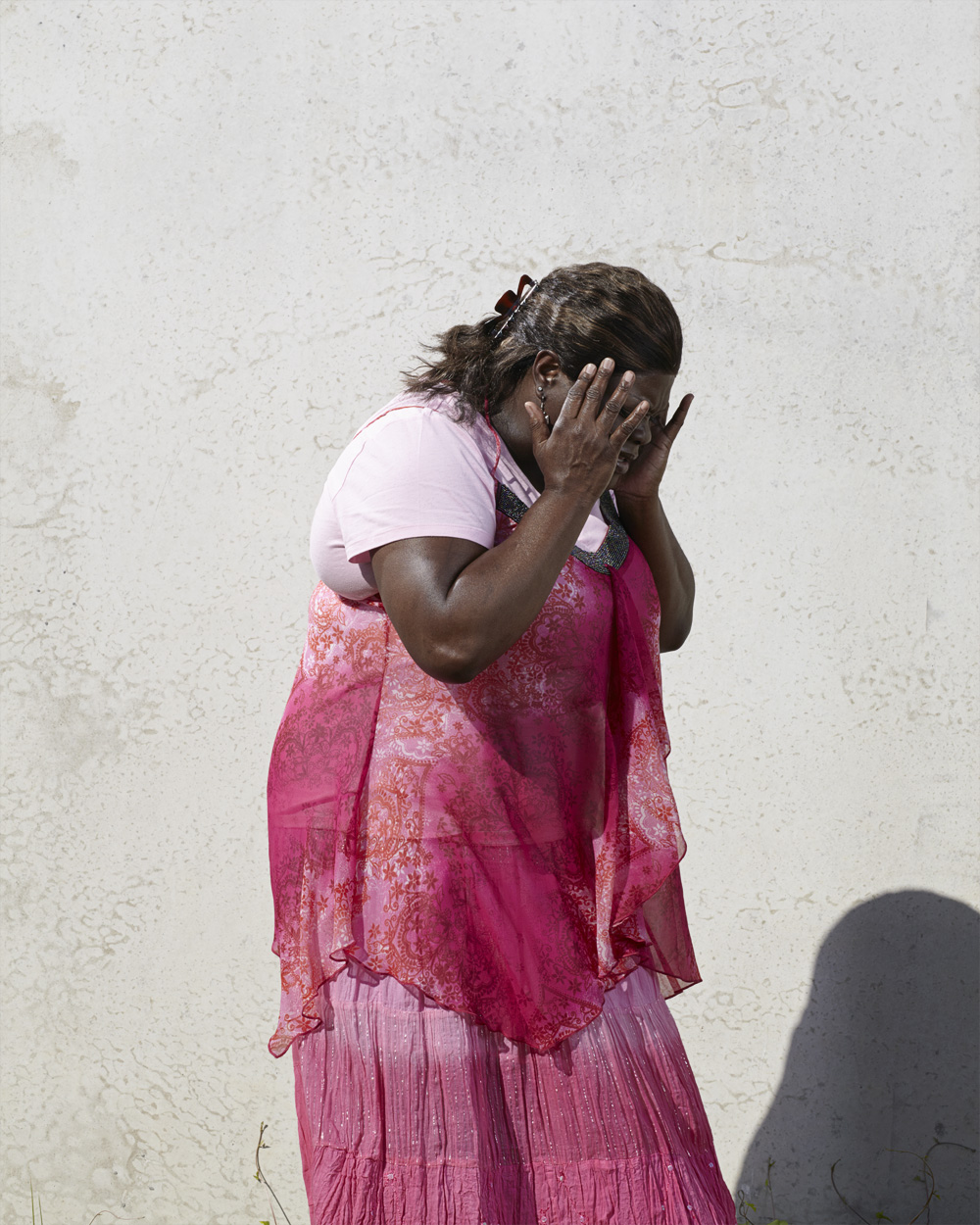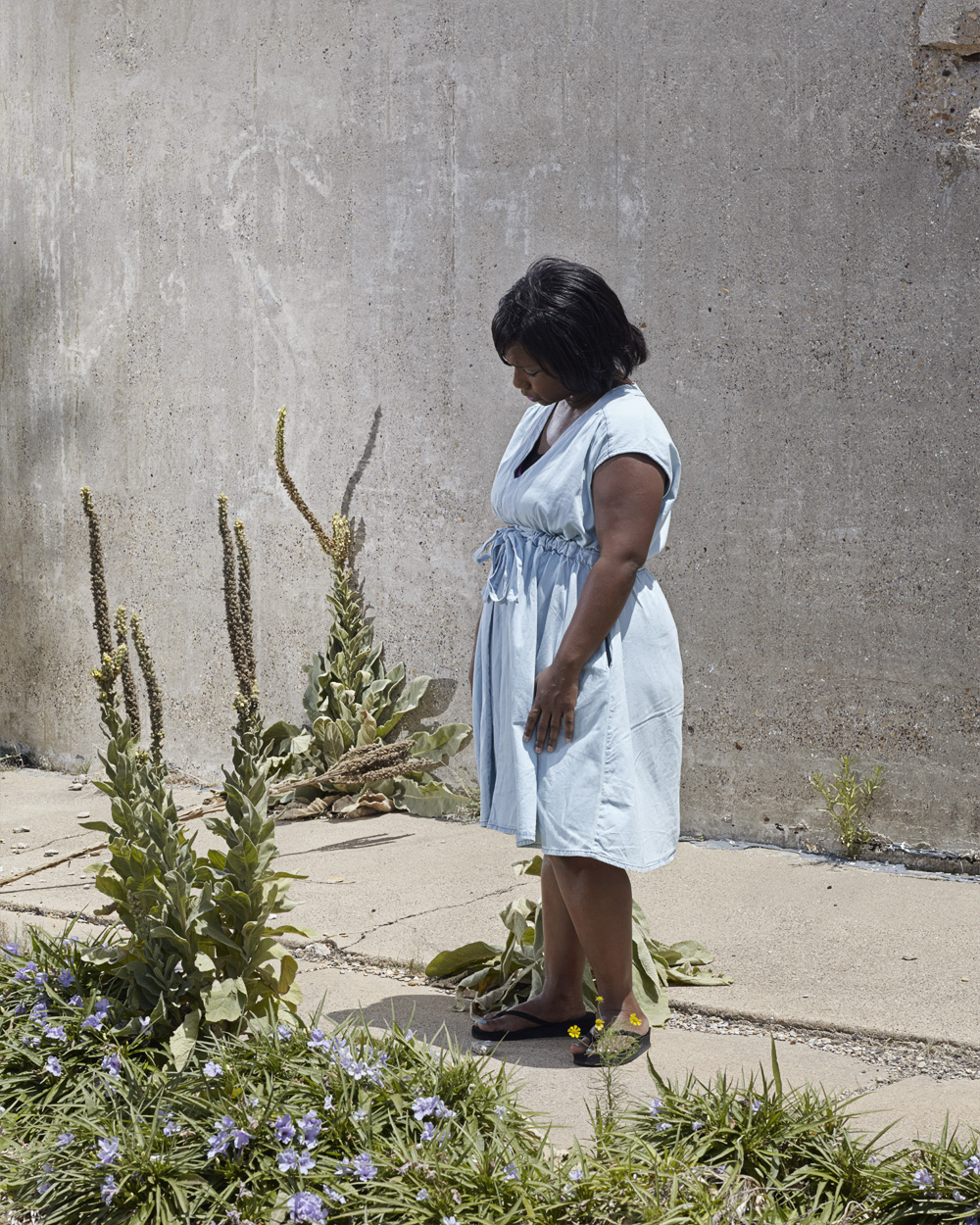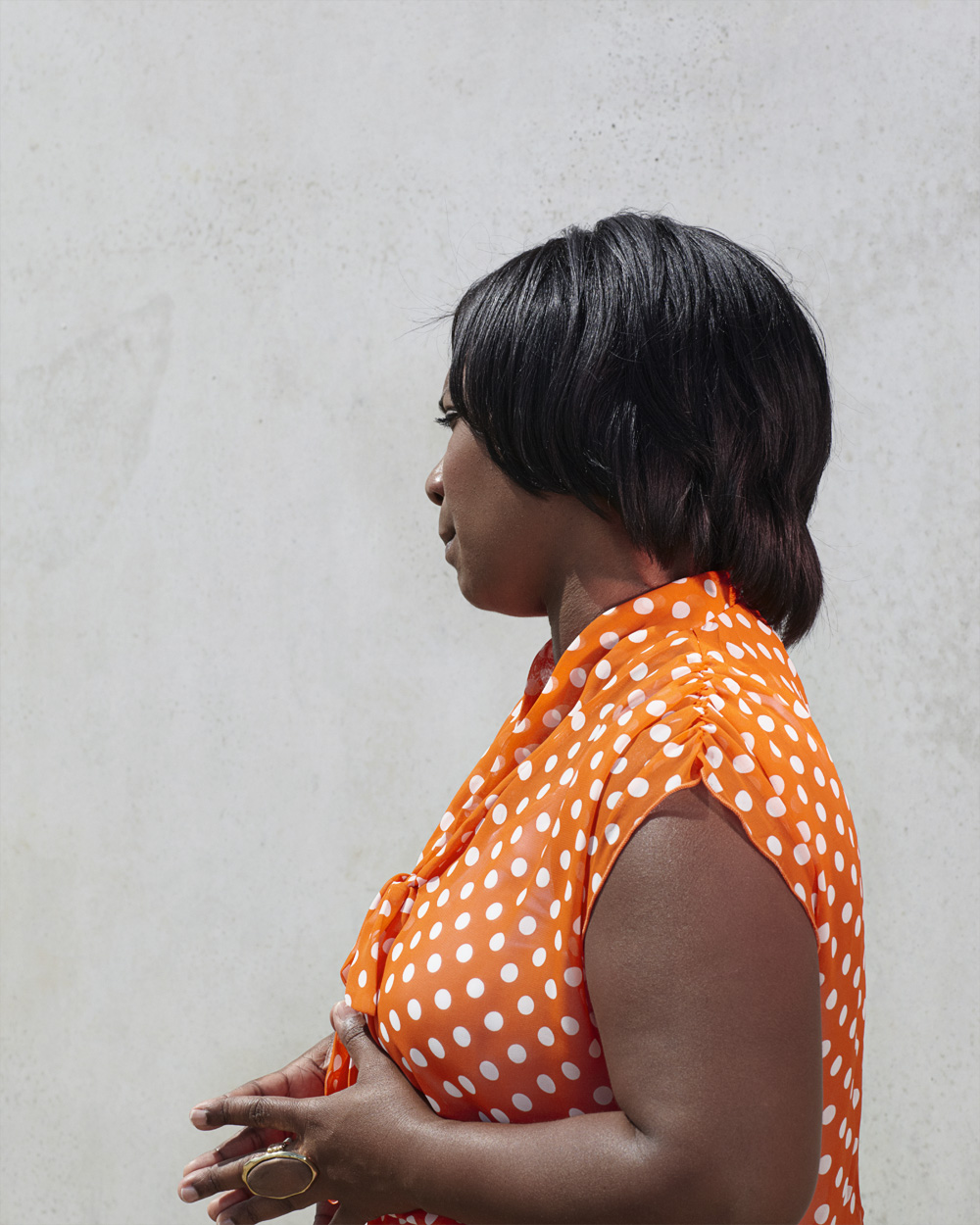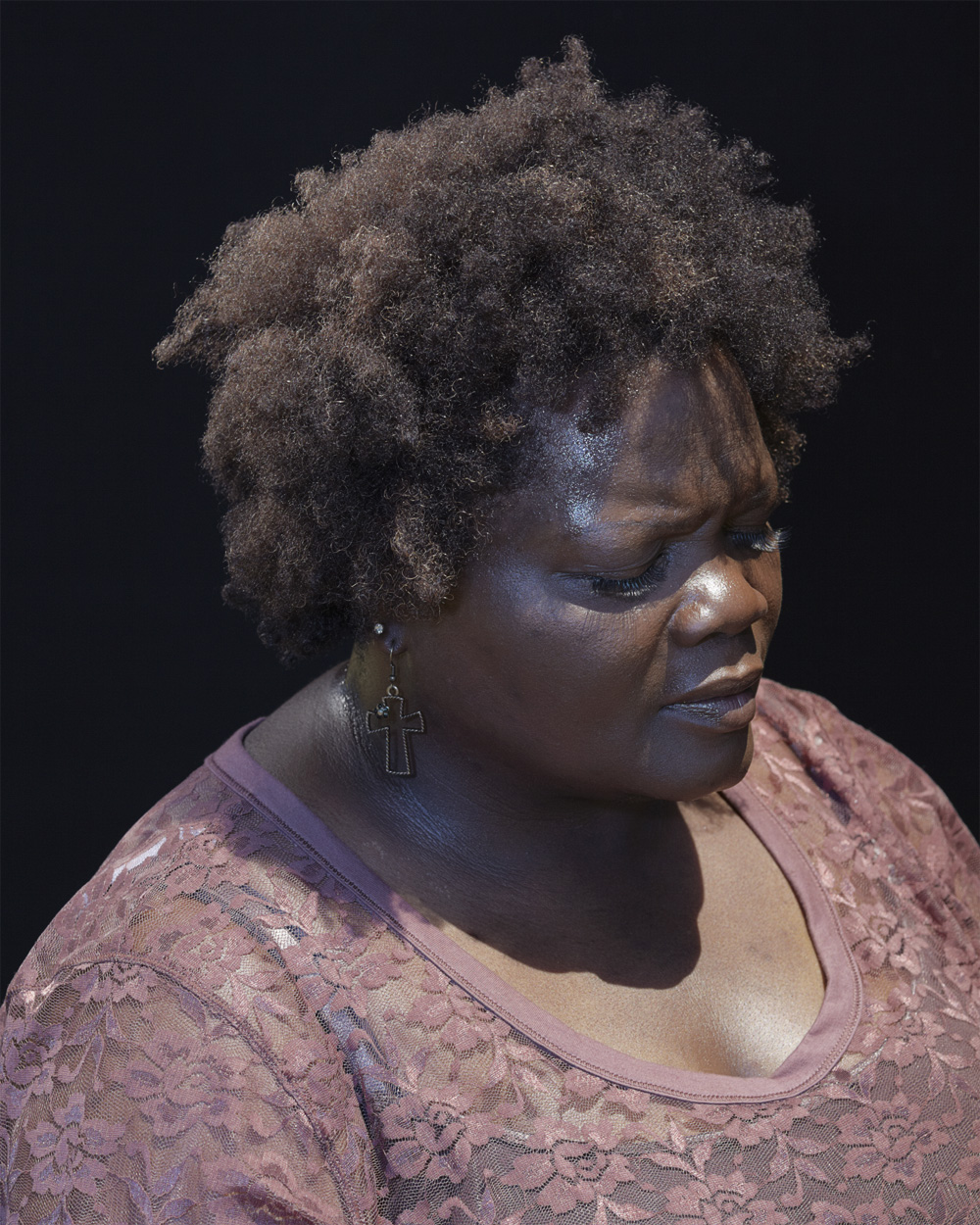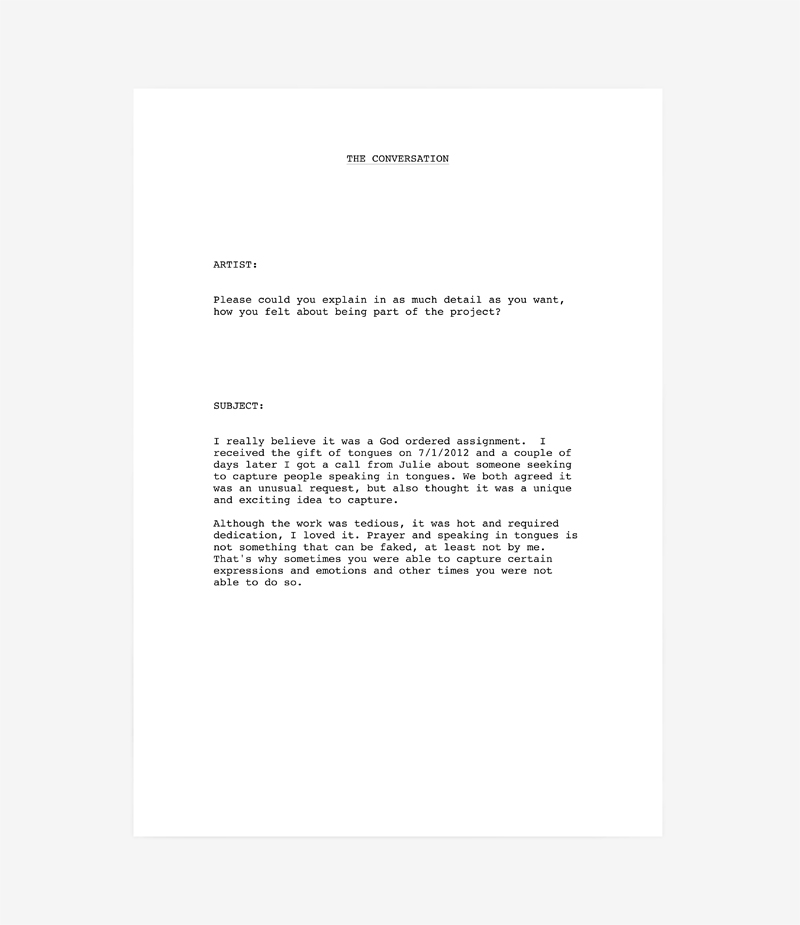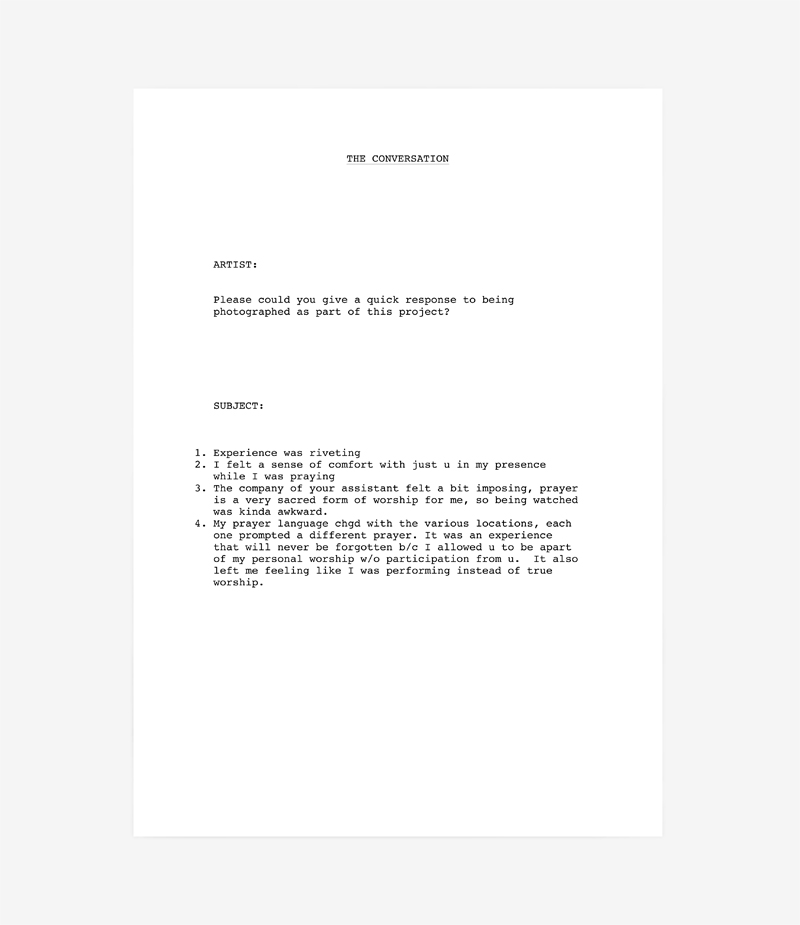THE CONVERSATION Speaking in tongues, performance & fiction
Speaking in tongues is a biblical phenomenon in which a person utters incomprehensible speech-like syllables, considered by some to be part of a sacred language. During an artist residency in Texas Hawgood searched for people who had this ability, through an advert in a local newspaper. This series captures these women in a moment of rapture, when they believe themselves to be in direct communication with God, to the exclusion of regular human conversation. Hawgood spent time with the subjects, gradually establishing a relationship of mutual trust in which they felt comfortable sharing their worship and revealing themselves in an altered state. Documenting such an intimate and personal moment risks becoming voyeuristic however Hawgood avoids the pitfalls and inherent falsehoods of documentary by making his presence felt through carefully constructed images.
Hawgood’s subtle yet meticulous manipulation of light, specific framing and choice of geographically and temporally anonymous location, deliberately suggest artifice. Yet the expressions, sweat and postures of the subjects are unquestionably genuine. There is an intriguing tension between the process of creating the image and the act of faith in the spiritual exchange. The work exists on the edges of genres; the cinematic subverts the documentary. We are reminded that the subjects are performing and that the act of photography is itself a performance; planned, rehearsed, and edited. Hawgood investigates to what extent the authentic can be captured in a staged moment. He stretches the contract of photography; we know what we see was once before the camera but to what extent is this “true”? In fact questions of truth become irrelevant; what we see may be true, in that it once existed before the camera, but can it in anyway be analogous to the lived experience of the subject? He reveals both the successes and failures of photography to communicate the experiences of someone in an altered state of consciousness.
Text by Jessie Bond
